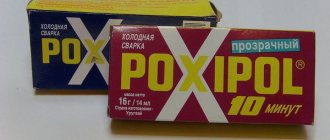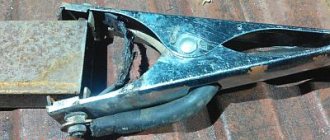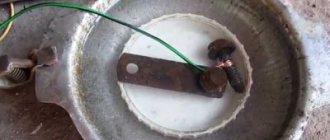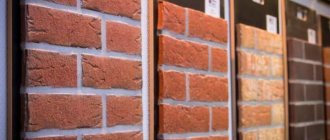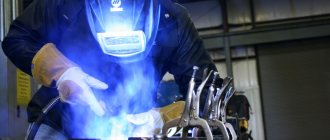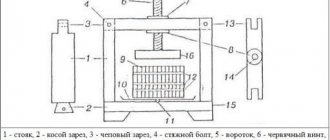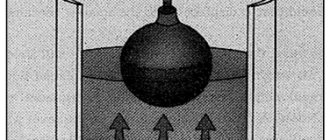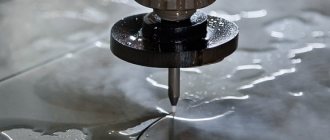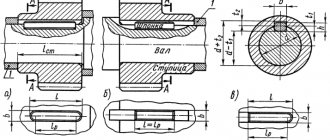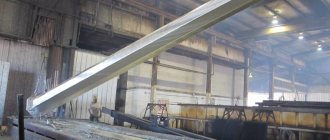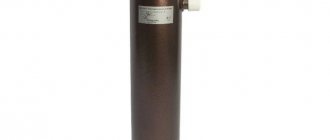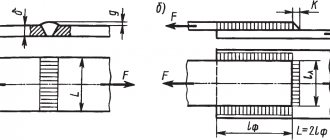Any surface must be primed before applying finishing paints and varnishes. This method of painting ensures the durability of the paint. Alkyd primer has a high degree of resistance to aggressive environments. This primer is used to cover surfaces that need protection from moisture. After complete drying, the protective primer layer is coated with alkyd paints. It is not recommended to use paints that are not compatible with the primer for this purpose.
Main properties and scope
Alkyd primer composition is almost universal. It is used to improve the quality of surfaces of wood, metal, glass, galvanized steel, and concrete. Alkyd primer applied to external metal structures and technical parts of buildings and industrial structures will reliably protect them from corrosion. Later, the primed metal surface is painted with alkyd paint (enamel). This combination of coatings gives the metal anti-corrosion resistance. Primed metal will use much less paint.
The polymers that make up the soil fill all the small cracks and pores on the metal surface. Thus, additional mechanical protection of the surface is created. Alkyd primer can be used on wooden surfaces before applying decorative and finishing materials (paint, putty, glue). If the surface of a tree is primed, then to create an external protective layer, in addition to alkyd paints, you can use liquid wallpaper. This combination of finishing materials with the base gives an excellent result, providing the wood with durability. Thanks to the high adhesion ability of soil and liquid wallpaper, a coating is created that is inseparable from the wooden surface.
Wood can also be painted using one or two layers of alkyd impregnation. Concrete, just like metal and wood, after applying protective primers, should be painted with alkyd paints. Completely dried alkyd primer creates, thanks to the polymers contained in its composition, a protective film. Therefore, primers, alkyd paints and impregnations are suitable for use in exterior work and interior decoration. Alkyd primer is compatible with alkyd impregnation, alkyd and acrylic paints, nitro paint, PVA glue and acrylic putty. It is not recommended to use this type of soil for finishing work on gypsum, plaster and any other crumbling building materials. This does not apply only to concrete.
Differences from acrylic primers
The difference between these compositions lies in the depth of penetration into the array. Acrylic compounds are capable of being deeply absorbed, so they are most often used on porous surfaces - concrete, brick, plaster, etc. Alkyd compounds are mostly adapted to protect metal or wood and cannot penetrate deeply into the material. Taking these features into account, one or another type of primer is chosen. We must not forget that both alkyd and acrylic compositions can be universal or combined, capable of performing an extended list of tasks. Therefore, in each specific case, you should familiarize yourself with the features and scope of the composition, study the information on the packaging, and only then make a final decision.
Alkyd primer: technical characteristics
The properties of alkyd compositions intended for preparing surfaces for finishing are very wide. In addition to improving the adhesion of the base material, they increase its water resistance. No less important are the antiseptic properties of alkyd polymers, which prevent the formation of mold and mildew. The main technical characteristics of alkyd compositions also include:
- Resistance to temperature changes from -40 °C to +60 °C.
- Reduced consumption of subsequent finishing compounds.
- Increasing the resistance of substrates to abrasion and chemicals.
- Reducing shrinkage and swelling of wood under the influence of moisture.
- Protecting the surface of painted wood from bleed-through of resinous areas.
Characteristics and Features
The main features of soils based on alkyd components include the following:
- Excellent resistance to temperature conditions;
- Reducing the consumption of materials used for surface finishing;
- Increasing resistance to abrasion, wear and chemical elements;
- Absolute surface protection from fungus, mold, rust and swelling;
- Eliminates the risk of resin protruding from the wood surface.
It should be noted that soil characteristics are often based on composition. That is why the following types of alkyd mixtures should be distinguished, taking into account the types of composition:
- Glypthal soils. They differ from other representatives in that the mixture includes a dye and a special filler, with which you can increase the efficiency of external and internal work;
- Perchlorovinyl mixtures - used in working with concrete, metal and plaster. They have a high degree of drying, but are mixtures with a high level of toxicity. That is why they are used in outdoor work using safety measures;
- Polyvinyl acetate mixtures are used before exterior finishing based on alkyd components. They have the most favorable drying time - 30 minutes;
- Alkyd-acrylic compositions are characterized by deep penetration into the material. This type of primer is considered a universal processing tool and is successfully used in working with wood and metal.
Despite the great difference in the characteristics of the components that may be included in alkyd primers, the surface treatment product always has excellent characteristics. The main thing is to follow the instructions and take advantage of safety measures.
Application technology
Alkyd primer is produced completely ready for use. Before starting work, it is necessary to prepare the surface well by cleaning it from dirt and drying it. The wooden base is cleaned of burrs, and the cracks are filled with putty. The metal surface must be cleaned of rust and degreased.
You need to work with this composition wearing gloves. Before application, the alkyd primer must be well mixed and, if necessary, diluted with white spirit, solvent or xylene to a viscosity of 21-24.
The polymer alkyd primer is applied using a brush, roller or spray in one or two layers. The time for complete drying of each layer at a temperature of 20 ° C and air humidity of 70% is 24 hours. This primer is frost-resistant, so it can be stored at subzero temperatures.
How is work done using a primer?
The manufacturer produces a ready-made alkyd primer that is completely ready for use. It does not need to be diluted with concentrates or additional components added. You should also take safety precautions: provide yourself with gloves, a mask and goggles.
Step-by-step use of alkyd primer is as follows:
- Preparing the surface for work. Wood is cleaned of burrs using emery, and metal is cleaned of rust using a metal brush;
- The surface is degreased using a special substance and left to dry for some time;
- The soil is mixed well in the container to achieve uniformity of the liquid;
- The mixture is applied to the surface using a roller, brush or spray. It is important to ensure that there are no lumps or drips.
After completing the work, the surface and room should be left for the allotted time indicated on the can for thorough ventilation.
Disadvantages of alkyd primer.
- long drying period;
— if the alkyd primer has not dried completely, some paints may curl upon contact with it;
- only the upper part of the surface is processed. That is, the alkyd primer does not penetrate deep into the material and cannot be used as a fixative for crumbling and loose materials. For them it is necessary to use acrylic primers;
— a construction bandage made of synthetic material that is not completely glued to the surface cannot be wetted with an alkyd primer. Because the bandage will bubble and stretch;
— despite the fact that white spirit is not a highly toxic substance, it is still quite harmful. Therefore, until the alkyd primer dries completely, the room must be well ventilated;
— the tools used for priming (brush or roller) must be stored wrapped in a rag moistened with white spirit. To prevent air from entering, they are additionally wrapped in polyethylene. This way the tools can be stored for a week. Then they can only be cleaned with special means.
Primer-impregnation for concrete acrylic (2.8 kg) “PRESTIGE” Rostov region
Product code: 039.023.120
- Description Characteristics
Description Packaging – 4 pcs. A colorless, deep-penetrating primer is designed to remove dust from concrete floors, as well as reduce consumption during subsequent application of enamel. Used as the first “bonding layer” for concrete and other porous surfaces. The primer can be used as a stand-alone product to penetrate concrete and impart hardness and abrasion protection. The primer is also used as a substrate for subsequent painting with PRESTIGE ENAMEL FOR CONCRETE FLOORS. In this case, the primer provides the most durable bond between concrete and enamel. – resistance to atmospheric factors – resistance to biological factors (water, mold, microorganisms) – protects the surface from cracking and the appearance of concrete dust Surface: concrete floors, various mineral bases Purpose: for external and internal work Produced ready for use. If necessary, dilution with xylene is possible. Dilution depends on the method of application (brush, roller, spray gun). Solvent: xylene Smell: yes Drying time: 1 hour Consumption: 90-120 g/m2 Shelf life: 24 months Application temperature: from +5 to +35 ºС Transportation conditions: frost-resistant (up to -40 ºС) TU 2313-017-88753220-2006
Characteristics
| Packaging options | |
| Product unit weight, kg | 2.8 |
| Product unit volume, m 3 | 0.003000 |
| Quantity per package, pcs | 4 |
Attention! Product images, including color, may differ from actual appearance. Components can also be changed without notice. We draw your attention to the fact that all the above characteristics of the product are for informational purposes only and do not constitute a public offer as defined in clause 2 of Art. 437 of the Civil Code of the Russian Federation. For detailed information about the characteristics of this product, please contact our sales department staff or the Russian representative office of this product.
Advantages of alkyd primer.
— high soil strength;
- resistant to abrasion after drying;
— reliably covers resinous knots. They are not visible even after several years;
— any paints (acrylic, alkyd, enamel, latex and nitro paint), glue (wallpaper, universal, PVA) and putties (acrylate and acrylic) lie smoothly on it;
— in addition to metal surfaces, alkyd primer is suitable for priming wood, plastic, plaster, laminated surfaces, chipboard, fiberboard, concrete, as well as surfaces previously painted with any paint;
- Can be used at sub-zero temperatures;
- low-toxic chemical composition. You can work without using special protective equipment; it is enough that the room is simply well ventilated;
— you can dilute the alkyd primer or clean the surface from it using white spirit. Inexpensive and accessible chemical.
What is a primer?
Alkyd primers represent a number of the most popular types of primer mixtures that are used in the repair of objects for any purpose. The demand for the compositions is very stable and high, which is achieved due to the positive characteristics and versatility of the mixture.
The primer can be used to treat various surfaces, from metal to plastic, wood and even glass.
The primer mixture provides excellent surface protection and also creates the basis for optimal coverage with facing materials. Despite the popularity of the composition, the product has both positive characteristics and negative features, which will be discussed further.
See also: all types of primers for metal
Advantages
The positive features of alkyd primers are as follows:
- The highest soil strength;
- Absolutely resistant to abrasion after the mixture has dried;
- Excellent hiding of resinous knots. They do not disturb the eyes even several years after treatment;
- Paints of any type (enamel, acrylic, etc.) as well as various types of glue (universal, wallpaper and PVA) fit perfectly onto the primer. Putty can also be applied to the surface;
- Many packages and cans indicate metal. However, the mixture is excellent for treating any other surfaces (plastic, wood, laminate, plaster, etc.);
- The ability to use the composition even at subzero temperatures, using basic methods to ensure the effectiveness of the mixture;
- Worker-friendly composition that has a minimal amount of toxins. Despite recommendations regarding the use of special safety equipment (masks, gloves, etc.), performing work without them will not pose any harm to health. Also, the time to ventilate the room after work is significantly reduced in comparison with soils based on other components.
Thanks to these advantages, the mixture has gained a foothold in the modern market for a long time, and is also popular in many areas of construction activity.
Flaws
Despite the impressive list of advantages, primer based on alkyd components has the following negative features:
- Drying takes a long time, so it is important to create optimal conditions with good ventilation;
- Upon contact with the mixture, some paints may curl, because some soil characteristics are activated only after drying;
- Only the top ball of the surface can be processed. The product does not penetrate into the depth of the material, therefore it cannot be used for fastening loose surfaces. In such cases, acrylic-based primers should be used;
- The mixture cannot be used for processing synthetic materials, because they may bubble and stretch significantly;
- Despite the minimal list of toxic substances in the primer, the mixture has a specific odor, so it is better to thoroughly ventilate the room;
- Tools used to work with alkyd primer are difficult to wash with plain water. It is necessary to use white alcohol, and also try to isolate brushes and rollers from air to avoid drying out.
Despite these disadvantages, alkyd primers are rightfully considered a popular means for primary surface treatment. If you use the mixture correctly, its characteristics and features will speed up work and improve the quality of surfaces.
Where is it used?
Alkyd primers can be used in repair and finishing work to treat various types of surfaces to ensure resistance to moisture and other biological and chemical influences.
Using the mixture will protect the surface from the formation of rust and fungus.
Also, treatment with alkyd compounds makes it possible to significantly strengthen the surface of an object and fill its pores and crevices, which will allow the use of less materials for finishing.
Alkyd primer mixtures are used in the following types of work:
- For processing wood, OSB and chipboard before finishing painting;
- For covering walls before applying wallpaper or putty;
- For processing metal before applying finishing paint.
The use of primer ensures a high level of adhesion between all balls of the finished surface. The external coating will have impressive resistance to mechanical, chemical and biological influences, which is important when treating surfaces that are located outdoors.
WHAT IS ALKYD PRIMER MADE OF?
Alkyd primers use a component similar to the varnish base for glypthal or pentaphthalic coatings. Synthetic primer resin, unlike paint, does not contain film-forming additives, substances that increase density and squeeze air out of the decorative layer.
An alkyd resin primer is not as thoroughly cleaned of residues of the original components as a varnish product for glyphthalic or pentaphthalic paint. In its “raw” form, such a primer has a dirty tint. Therefore, in some cases, such a primer is not cleaned, but is artificially saturated with dark brown, black or gray pigment and reagents are added that reduce the surface tension forces of the liquid primer film. The solvent for the synthetic alkyd primer base uses more volatile substances than the paint.
This allows the primer mass, which is more liquid than paint, to easily penetrate into the smallest pores of the walls. Thanks to the modification of the resin with vegetable drying oils, the primer easily adheres even to wall surfaces contaminated with micron cement dust. The latter factor is usually an insurmountable obstacle for most viscous epoxy and polyurethane primers.
Why is it important to treat the concrete surface with soil?
Many people mistakenly believe that protecting a concrete foundation is not necessary.
However, despite the fact that concrete itself is a very durable material with a long service life, it is also susceptible to various aggressive environments and loads.
- Water entering through the pores, freezing, can lead to delamination of the material and the appearance of microcracks.
- The reinforcement present in the concrete body begins to rust under the influence of water, gas, and salts, which also gradually leads to destruction.
Destruction of concrete from corrosion
- If we talk about concrete floors, then the top layer of the base is quite fragile, during operation it begins to deteriorate, dust appears, which harms human health and worsens the characteristics of the floor.
What does priming a concrete surface provide:
- The soil binds dust particles and the surface is dust-free.
- A primer for concrete surfaces protects the base from the formation of fungus and mold.
- With the help of such compositions, the adhesion of a smooth concrete base to subsequently applied coatings is improved. Otherwise, after finishing work, cracks may appear in the plaster and paint, and the wallpaper may peel off.
- As a result of using a primer, the quality of application is improved and the consumption of liquid and paste finishing materials is reduced.
- Primers close the pores of concrete, thereby protecting it from external influences and increasing its service life.
- The use of soil allows you to strengthen the top layer of concrete and make it more resistant to loads.
Considering the above, we can conclude that treating the floor, walls, ceiling, and other concrete bases with a primer is necessary. Requirements for materials for protecting concrete are set out in GOST 31384-2008 “Protection of concrete and reinforced concrete structures from corrosion.”
WHICH WALL PRIMER IS BEST SUITABLE
Finishing of internal and facade walls with alkyd primers differs in operating conditions and safety requirements. First of all, it should be understood that alkyd primers are not enamels; they have a similar composition, but a completely different structure on the wall surface. If we draw an analogy, glypthal enamel can be compared to a high-quality aluminum pan, while alkyd primer, at best, looks like a colander.
Some of the most commonly used ones include:
- GF 021, GF 032 - general purpose primer for preparing wooden and metal surfaces and walls for painting. Option GFP 021 contains substances that convert rust residues into a stable insoluble compound with a dense structure. Good primer for wood;
- Soil GF 0119 GOST 23343-78. The composition for treating wooden, metal, concrete walls of internal non-residential premises is diluted with xylene, solvent, and white spirit. Touch-drying time is 90-120 minutes, complete drying at room temperature is 10 hours. The dried surface is absolutely safe, but application requires the use of good supply and exhaust ventilation. Typically comes in red-brown color;
- Alkyd primer "Tikkurila" with the effect of anti-corrosion protection of ferrous metals. Available in five colors: green, gray, red-brown, black, silver. Apply to completely dry surfaces. Drying time – 5 hours. Used to coat metal and concrete walls.
Important! For interior work, it is recommended to use alkyd primer No. 021 and No. 0119. All primers containing rust modifiers or for which toluene-based solvents are used are strictly not recommended for treating interior walls.
Often, glypthal varnishes can be used as an alkyd primer for gluing wallpaper on walls to strengthen the wooden surface. They do not contain red lead or lead pigments, so they will always be safer and easier to use.
Advantages of alkyd-based primer
The advantages of alkyd primer are considered to be:
- soil strength, resistance to mechanical stress;
- abrasion resistance;
- hiding power, reliably masks even problem areas such as resin knots of wood;
- stable adhesion with any finishing coatings (acrylic, latex or alkyd enamel, nitro paint), as well as with adhesives (wallpaper, PVA) or putties (acrylic or acrylate);
- universal action, applied to surfaces made of any materials - metal, wood, concrete, brick, plastic, etc.;
- ability to be applied at low, even negative, temperatures;
- allows you to work without special protection, it is enough to organize ventilation of the room;
- To obtain working viscosity, white spirit is used, one of the inexpensive and common types of solvent.
These advantages have allowed alkyd primers to find their niche among alternative options and receive positive ratings from users.
Types of soils
Alkyd primers come in several types. The attitude towards one or another group is determined by their composition. Glypthal. Their main difference is that they consist of a coloring pigment and filler. They, like alkyd primers, find their use in finishing work outside the building and inside the premises. Used to create a protective film on the surface of concrete, wood, metal, glass.
Enamels and paints are laid on top of these primers. Glypthal primers, which have a wide range of applications, are called universal or general purpose primers. There are certain types of this material that can only be used for metal surfaces. They are distinguished by their ability to create a water-repellent film with anti-corrosion properties. Perchlorovinyl primer is intended for application to metal, plaster, and concrete. Not used for indoor work. Dries within an hour.
Polyvinyl acetate primer. Dries in half an hour. Use only in combination with alkyd paints. Polystyrene primer. Can only be used for external street work due to its high toxicity. It is suitable for use on wooden substrates. Alkyd-urethane primer enamel. Designed for coating metal surfaces of vehicles and external metal structures. It is characterized by increased moisture resistance.
Primer for wood: product characteristics
Before covering wooden surfaces with paints and varnishes, special solutions are applied to them to increase absorbency. Wood primer contains plasticizers, film-forming components, pigments, and drying accelerators. It is classified into several types:
- water-soluble agents that protect the material from biological corrosion;
- primer for wood with water-repellent properties, intended for facade work.
Application
Alkyd-based primer is used for processing any metal and wooden products, for example, car bodies, frame wooden buildings and houses, as well as for protecting various boards, such as chipboard, OSB, and others. After the primer has dried, it can be primed and some other finishing applied, for example, paint, varnish, etc.
In addition, an alkyd-based primer has another important feature - the polymers included in its composition, after drying, form a high-strength surface film that is sufficiently resistant to adverse factors and environmental influences. Therefore, a mixture, for example, otex tikkurila alkyd primer, can be used during interior and exterior work. Many compositions, including otex tikkurila, can be tinted in any color.
Classification of primers for concrete
Manufacturers and retail chains, depending on the final goal, offer to treat concrete with various types of primers, which are classified according to 5 main factors. For clarity and simplicity of understanding, let’s create a classification table:
| Classification factor | Type of primer |
| Composition basis | acrylic primer for concrete, mineral, phosphate, polystyrene, glyphthalic, quartz, alkyd and epoxy primer for concrete. |
| Degree of penetration into the thickness of the surface | Standard and deep concrete primer. |
| Purpose | Universal, for plastering, installation of finishing materials. |
| Base type | For external work, for internal work, universal. |
| Problem to be solved | Moisture-proof, antifungal, anti-corrosion, fireproof, antiseptic. |
